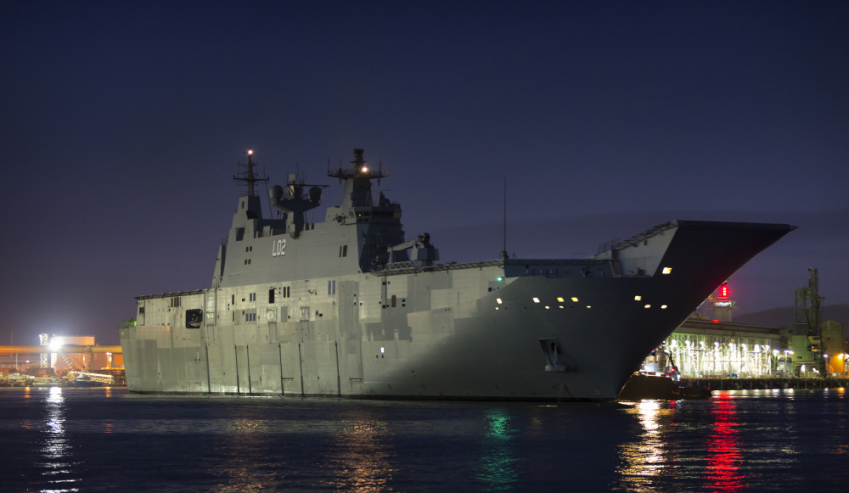Defence has revealed the costs of repairs to the propulsion systems of the Landing Helicopter Docks (LHDs), which were in dry dock from March until June this year, will come in at just under $20 million.
To continue reading the rest of this article, please log in.
Create free account to get unlimited news articles and more!
In response to a Senate estimates question on notice, Defence confirmed the current indicative costs of the unscheduled propulsion system investigations, repairs and servicing has come to a combined total of $16.5 million for HMAS Adelaide and HMAS Canberra.
"The cost estimate encompasses spares, labour, docking costs and also includes preventative maintenance for the pods, which was brought forward as a risk reduction measure and to also maintain alignment with routine equipment servicing," the response said.
Earlier this year, Chief of Navy Vice Admiral Tim Barrett confirmed there was a migration of oils across seals in the LHDs' azimuth propulsion pod systems. The docking and inspection of Adelaide identified wear in some bearings in the port pod, which was assessed to be the likely cause of the oil contamination.
Forensic investigations and trials are continuing with industry partners in order to determine the underlying root cause of the defects and ensure the repair strategy is enduring, but it remains unclear how much of the $16.5 million costs will be covered by warranty, industry and the Commonwealth.
"The ability and extent to which the Commonwealth can access warranty and/or latent defect provisions is dependent on ongoing technical investigations and negotiations with industry," Defence said.
Negotiations with industry over the costs have been ongoing for some time, with Rear Admiral Adam Grunsell, AM, CSC, telling Senate estimates in October Defence intends to recover some of the costs from industry.
The LHDs, which cost about $1 billion each, were designed and built by Spanish company Navantia with help from BAE Systems and German company Siemens. The vessels were dry docked in Sydney from March this year until the end of June because of issues with the propulsion systems.
VADM Barrett told Senate estimates in October that Defence has "taken a cautious approach since" and the vessels will continue to be monitored over a period of time as they look at other issues during test and evaluation.
"There are other issues that we would seek to look through with the ship during this test and evaluation period to confirm that we have resolved all the issues we need to – noting that this is two years into a 30-year life," VADM Barrett said.
The Chief of Navy also quashed rumours that Australia's operational intensity of the vessels is unsuitable for the ships, but added they are looking at its operations to ensure Defence's initial judgement on design and sustainment are suitable.
"We're looking at how that ship is operated and how we operate, to make sure that our initial judgements on design intent and sustainment practice are contemporary and appropriate to the way that we operate," VADM Barrett said.
"There's been no indication from the ship designer, in Navantia, as to how we're operating the ship. We do drive the ship differently from the Spanish Navy, from the armada, and, again, we are looking at that, but we are not – and it has not been indicated by the original equipment manufacturers that we are – operating outside the limits of what the equipment was designed to do.
"My biggest issue will be making sure we only use them at sea equivalent to the number of sea days that I'm funded to be able to provide them – and that is part of the sustainment issue. That is, if I've only got spares and maintenance to run them for a certain number of days a year and I'm asked to operate them beyond that, then I start ageing the platform far more quickly than we had intended and it wouldn't last 30 years."
The 27,000-tonne amphibious assault ships were commissioned on 28 November 2014 (Canberra) and 4 December 2015 (Adelaide).
The ships are able to land a force of over 1,000 personnel by helicopter and water craft, along with all their weapons, ammunition, vehicles and stores.

 Login
Login







